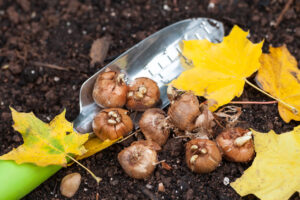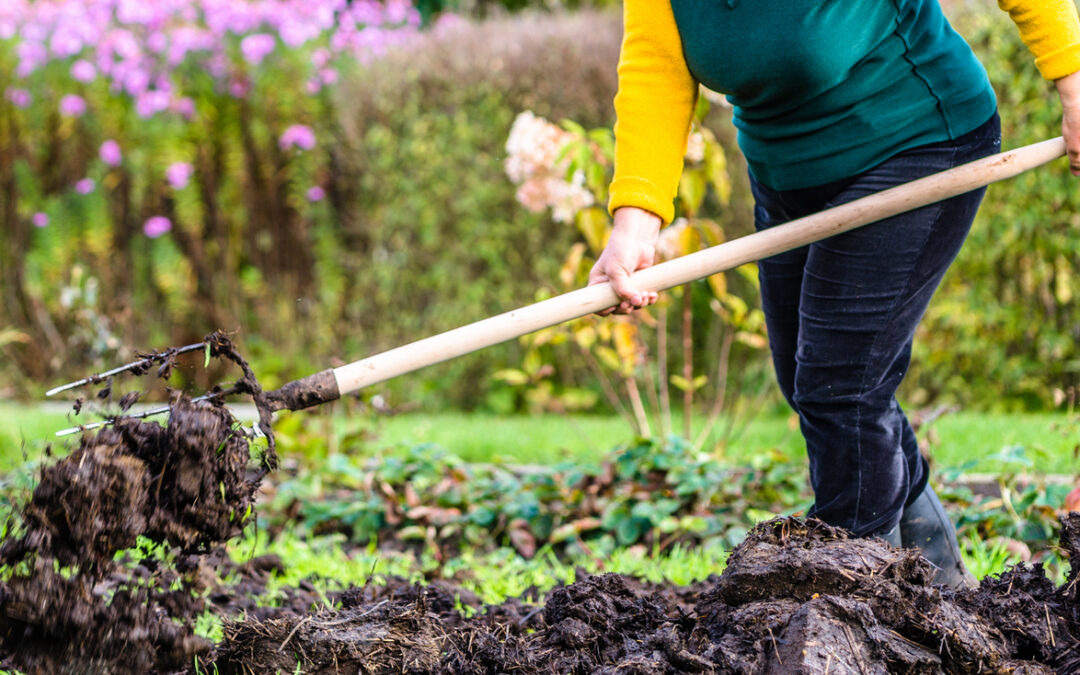As summer wanes and greens fade to brown and yellow, it can feel like fall is not a time for new growth. We may not typically think of fall as garden time, autumn is a fantastic time to start or continue your gardening journey. The cooler temperatures and shorter days provide ideal conditions for many plants to thrive.
Here’s a beginner’s guide to help you get started:
Choosing the Right Plants
- Cool-season crops: These thrive in cooler temperatures. Popular options include:
- Leafy greens: Kale, spinach, lettuce
- Root vegetables: Carrots, beets, radishes
- Brassicas: Broccoli, cauliflower
- Perennials: Plant perennials that will bloom next spring. Consider:
- Daffodils
- Tulips
- Pansies
- Violas
Preparing Your Garden
- Clear the area: Remove any debris, weeds, and dead plants.
- Work the soil: Add compost or well-rotted manure to improve soil fertility and drainage.
- Create planting beds: If you’re starting from scratch, mark out your garden beds and dig them to a depth of 6-8 inches.
Planting Your Seeds
- Follow planting instructions: Check seed packets for specific planting depths and spacing.
- Water thoroughly: Ensure seeds are well-moistened after planting.
- Protect from birds and pests: Use row covers or netting to deter unwanted visitors.
Caring for Your Garden
- Water regularly: Aim to keep the soil consistently moist but not soggy.
- Weed often: Remove weeds promptly to prevent competition for nutrients and water.
- Mulch: Apply a layer of mulch around your plants to help retain moisture and suppress weeds.
Harvesting Your Crops
- Harvest at peak ripeness: Use a sharp knife or scissors to avoid damaging the plants.
- Store properly: Follow storage guidelines for each crop to extend its shelf life.
Preparing for Winter
- Clean up: Remove any dead or diseased plants.
- Protect tender plants:Consider covering or mulching tender plants to protect them from winter weather.
- Plan for next season: Start planning your spring garden by selecting seeds and preparing your garden beds.
And while you’re planning for your spring garden, don’t forget about bulbs.
 The time is right to plant bulbs for beautiful spring blooms. Here’s a simple guide to help you get started:
The time is right to plant bulbs for beautiful spring blooms. Here’s a simple guide to help you get started:
Choosing the Right Bulbs
- Think about bloom time: Choose bulbs that will bloom at different times to enjoy a continuous display of flowers.
- Variety is key: Plant a mix of bulbs for a vibrant garden.
Preparing Your Garden
- Choose a sunny location: Bulbs need plenty of sunlight to bloom.
- Work the soil: Ensure the soil is well-draining and rich in organic matter.
- Dig planting holes: The depth of the holes will vary depending on the bulb type, so check the planting instructions.
Planting the Bulbs
- Place the bulbs correctly: Plant the bulbs with the pointed end facing upward.
- Cover with soil: Gently fill in the holes with soil.
- Water thoroughly: Ensure the bulbs are well-watered after planting.
Caring for Your Bulbs
- Mulch: Apply a layer of mulch to help retain moisture and protect the bulbs from extreme temperatures.
- Resist the urge to dig: Let the bulbs remain undisturbed until they have finished blooming.
- Divide bulbs: After several years, divide overcrowded bulbs to maintain healthy growth.
Popular Bulbs for Fall Planting
- Daffodils: Classic spring blooms in a variety of colors.
- Tulips: Vibrant and versatile, available in a wide range of varieties.
- Hyacinths: Fragrant blooms in shades of pink, purple, white, and yellow.
- Crocus: Tiny, early-blooming flowers that add a touch of color to the garden.
- Muscari: Grape-like clusters of blue, purple, or white flowers.

